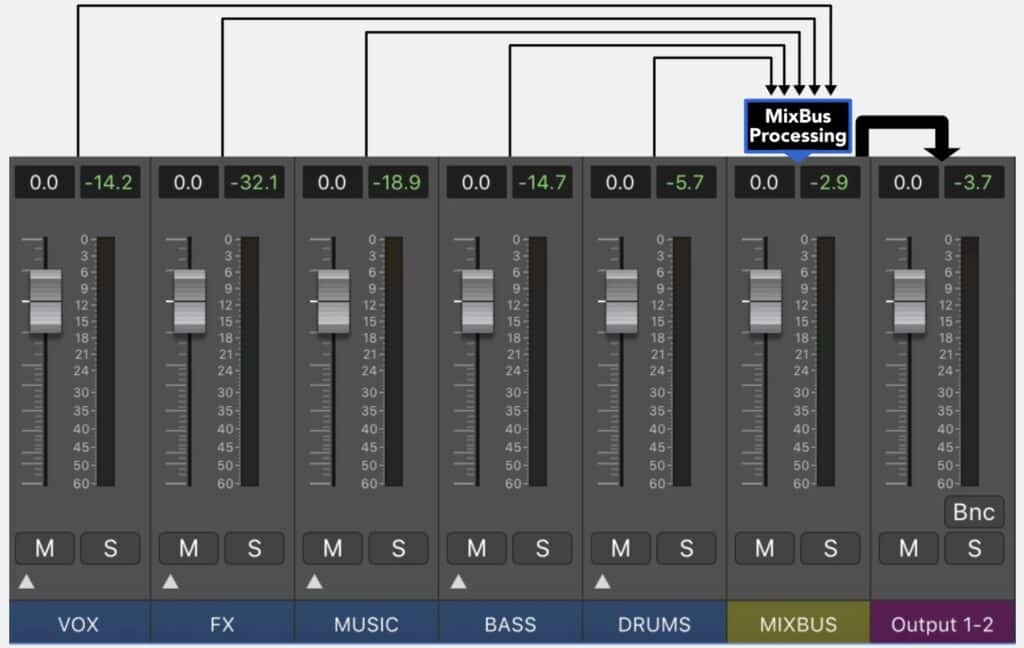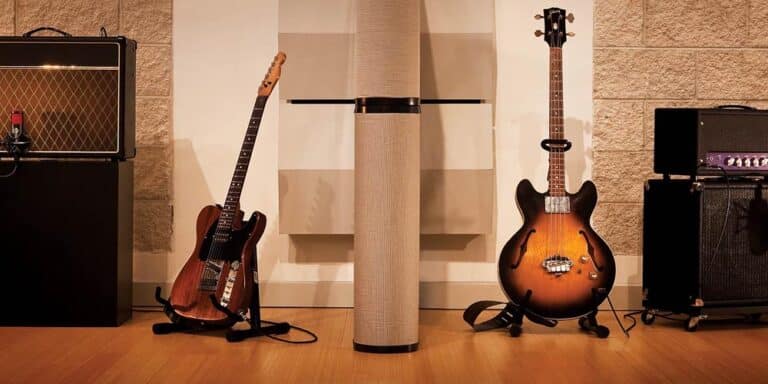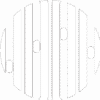Last Updated on December 22, 2022 by IDS Team
Using busses to mix guitar is the holy grail of blues, rock, punk, and metal production. This is about fat, punchy sounds which boost the intensity of your tracks and make your choruses pop out. There are several ways to achieve this, and you can always get creative with the multitude of effects out there. However, to start with, here are the basics which you NEED if you want to include this in your production. These are the combination of double-tracking, and busses. Read on to find out more.
Using Busses to Mix Guitar: When and Why You May Need to make Your Sound Bigger
To start off with, it’s good to know where and why you want to make your sound bigger. Many bands, including pop punk, punk, and 90s alternative, used copious amounts of double tracking. This became a technique to make their choruses really stand out from their verses. For upbeat genres, this contrast made tracks have distinctive ups and downs which defined the decade – think of Song 2 by Blur or practically any pop-punk track. However, it’s also used to create fat, crunchy metal and rock riffs. It can extend to less obvious styles, too, such as pop, fusion guitar or even jazz and blues. In short, double tracking and the use of busses is an essential skill for all guitarists. This is especially true if you are serious about producing your work. Although this article mostly covers how you might double-track for rock, pop-punk, or indie, the technical process is more or less the same if you want to use it for other genres too.

Double Tracking: Why You Need It For Choruses and How to Use It
What is double-tracking? It’s the process of layering two tracks of guitar on top of each other. However, you can’t do this by simply duplicating one of the tracks. Instead, when double-tracking, guitarists record each track separately. The two takes must be sonically very close to each other. The similarities make the tracks sound like one, fatter track. Simultaneously, the minute differences stop the sound waves from cancelling each other out.
Double tracking is an invaluable production skill if you don’t have your dream gear. For example, if you can’t get a big enough sound with your current amp, double tracking can fill things out. Additionally, your track arrangement might mean you add more instruments into the chorus, or vocals become higher. In many genres, a great chorus part needs the overall energy to increase. In these sections, double tracking is a great way to do this and increase heaviness and intensity along the way.
To double track, create a new track and label it the same as the track you want to double. If you’ve already recorded the part, simply record the same part onto the second track. You now have two tracks with the exact same guitar part on them. If you haven’t, just record the same part separately onto each separate track. Here, it’s important that you don’t just copy and paste the waveform! This will lead to sounds cancelling each other out, and you simply won’t get the same fat sounds you’re after. Instead, the minute differences between the two separate recordings are responsible for making everything sound much bigger. You now have two separate tracks with the same part recorded onto each in separate takes.
Beginners’ Guide to Mixing Guitar With Buses: How to Organise Your Tracks
With these duplicate tracks, it’s important to organise them. This is where busses come in. A bus is a track to which two or more other tracks direct their signal. This way, you can add effects to all of the tracks which connect to one bus, simply by adding them to the bus itself. This means you can apply reverb, delay, and so on to multiple tracks at the same time.
How do you do this? It varies from DAW to DAW, but look for an option labelled I/O or inputs/outputs. This allows you to control the sends and receives of a track. These are essentially what signal is going to the track, and what signal is travelling from the track. To route your tracks of choice to a bus, make sure you name the bus something clear. Then, when you go through the options for sends, you should be able to find it as an option. Do this to the same bus for both your tracks and you can now add FX to the bus which will affect both the original tracks.
Using Busses to Mix Guitar: Precision FX and Tone
In addition, double tracking is also fantastic for blending in small levels of FX. This is especially true if you don’t want to overpower the original sound. For example, you can blend a plate reverb, which tends to be quite distinctive, into your lead guitar line. Here, you can add it on only one track and create a double track of that part without the reverb. Just remember to record them both separately! Then, you get the effect but the original sound is still intact.
In short, double tracking is the Swiss army knife of production skills. It’s extremely powerful because it allows you such precise control over your sound. Building tone by blending in small amounts of other sounds will set you apart from the rest, taking your work away from just production into sound design and experimentation.
Final Thoughts:
Using busses to mix guitar is a topic you can keep coming back to. It’s so useful for every part of the mixing process. We can’t go into everything but think of this article as a rough guide to start off with. That way, you get an overview of what goes on and you can make it increasingly more complex as you develop your skills. Busses and double tracking can open up entirely new worlds of music production – and these basic skills serve as the building blocks to creating cohesive tracks which really work together.
Like this article? We have more beginners’ guides in our tutorials section HERE, plus upcoming articles for more serious producers and sound designers.



